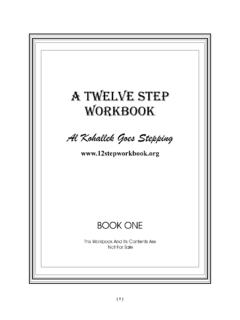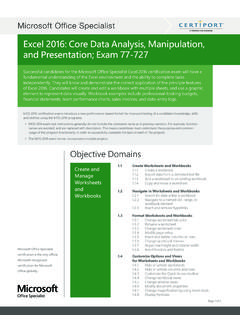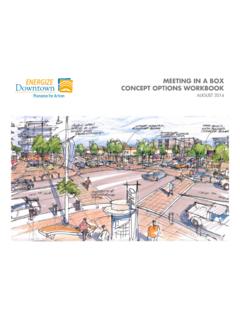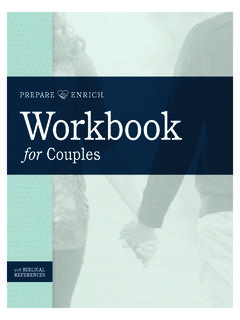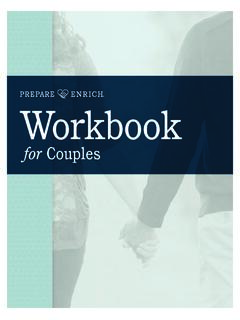Transcription of Strategic Planning Workbook - Columbia University
1 Strategic Planning WorkbookSTRATEGICPLANNINGWORKBOOK STEVEN COHEN & WILLIAM EIMICKE GRADUATE PROGRAM IN PUBLIC POLICY AND ADMINISTRATIONSCHOOL OF INTERNATIONAL & PUBLIC AFFAIRSCOLUMBIA University MAY 1998 Forward This Strategic Planning Workbook has been developed for practitioners. Our general approach to education is what we call learning by doing. In order to learn about Strategic Planning , you will be asked to develop a preliminary Strategic plan for your own organization. The best Strategic plans are developed collectively by all members of an organization. They require specific information about an organization's history, activities, environment and mission. This Workbook will be used during the week to bring you, step-by-step, through a Strategic Planning exercise.
2 We will brief you on each section of the Workbook , give you time to fill it out and then facilitate discussions of the plans you develop. To get the most out of the Strategic Planning exercise, we think it would be useful for you to try to complete the Workbook before the course begins. Some of the issues may require research and the use of records that you have at your office but will not be able to access during the course. If some of the sections of the Workbook seem unclear to you, please leave them blank and plan to work on those sections once we have had a chance to work with you after the course begins. If you have any questions please feel free to contact us at 212-854-3490, fax 212-864-4847 e-mail Steve Cohen & Bill Eimicke Strategic Planning WORKBOOKTABLE OF CONTENTS Page Strategic Planning - What is it?
3 1 I. Problem and Opportunity Recognition 2 file:///C|/Users/admin/Documents/website s/cohen/ (1 of 22) [11/4/2008 7:12:03 PM] Strategic Planning WorkbookA. The Mission Statement 2 1. First draft umbrella statement 2 a. What programs and services should we be providing? 3 b. Why do we exist? 3 c. How are we unique? 4 d. Who are our customers/users? 4 e. What are the three to five most important programs 5 we provide, now and in the future? f. What do we do best, now and in the future? 6 g. How are we different from the way we were three to five 6 years ago? h. How are we most likely to be different three to five years 7 from now? i. What are our major ecological concerns and how can we 7 measure them?
4 2. Detailed statement 8-9 3. Rewritten draft umbrella statement 10 B. Identification of future challenges and opportunities 10 1. What is the source of the challenges and opportunities to your 10 organization? 2. Why do these challenges and opportunities exist? 11 II. Identification of Parties 13 A. Who is creating problems, challenges, and opportunities for our 13 organization? 1. What internal groups or parties are involved? 13 2. What is their perspective? 13 file:///C|/Users/admin/Documents/website s/cohen/ (2 of 22) [11/4/2008 7:12:03 PM] Strategic Planning Workbook3. How will these parties affect our mission? 14 4. What external groups or parties are involved? 14 5. What is their perspective?
5 15 6. How will these parties affect our mission? 15 III. Historical Analysis 16 A. What created these problems and opportunities, and how did we get here? 16 B. How have different levels of our organization and the individuals within the 16 organization responded to key challenges and opportunities in the past? C. How long have these challenges and opportunities existed? 17 D. What attempts have been made at preventing and at exploiting opportunities? 17 E. How successful/unsuccessful were these attempts? 18 F. How have the parties involved responded to these efforts? 18 IV. Situational Analysis 19 A. Organization Strengths, Weaknesses, Opportunities and Threats 20 1. Strengths and weaknesses worksheets 20-22 2.
6 Opportunities and threats worksheets 23-25 B. Identifying desired goals 26-27 V. Strategy Formulation 28 A. Defining and Accomplishing Success, 12-Month Goals 29-33 B. Defining and Accomplishing Success, 5-Year Goals 34-38 VI. Ex-Ante Review 39-40 Strategic Planning What is it? file:///C|/Users/admin/Documents/website s/cohen/ (3 of 22) [11/4/2008 7:12:03 PM] Strategic Planning Workbook "At least three decades ago, Peter Drucker defined Planning as actions taken right now to reach tomorrow's objectives. His definition still holds; Planning means deciding what has to be done to prepare a given organization for the future." (from Strategic Planning for Public Managers, James Mercer, p.)
7 17) Hoffer and D. Schendel define strategy as the basic pattern of current and planned resource deployments and environmental interactions that indicate how the organization will achieve its objectives. "A strategy attempts to delineate the resources that will be used to pay for specific activities designed to accomplish specific objectives. Strategy formulation begins with the identification of objectives and the determination of methods for reaching objectives. These objectives and activities are then scaled to fit within resource constraints. Each element of a strategy (objectives, activities and resources) is constrained by political, social, economic and environmental variables.
8 The objectives and activities of public organizations are constrained by the formal authority provided by statute." (from The New Effective Public Manager, Cohen and Eimicke, p. 196) I. PROBLEM AND OPPORTUNITY RECOGNITION A. The mission statement What is the work that you are trying to do? What is the overall mission of your organization? Write a first draft of your mission statement below and then write a second draft at the end of this section. 1. First draft umbrella statement (15 to 30 words): should be short enough to remember; identifies the purpose that the agency's programs are intended to serve. << Questions associated with mission statement formulation >> Use the following questions [(a) through (i)] to develop your organization's mission statement.
9 A. WHAT PROGRAMS AND SERVICES SHOULD WE BE PROVIDING? Identify your agency's niche and key services. b. WHY DO WE EXIST? How and for whom would life change if we did not exist? file:///C|/Users/admin/Documents/website s/cohen/ (4 of 22) [11/4/2008 7:12:03 PM] Strategic Planning Workbook c. HOW ARE WE UNIQUE? Examples: Special programs and services Concentration of effort Geographic locations Nature of customers/users Unique capacities Type of support services Legislative mandates d. WHO ARE OUR CUSTOMERS/USERS? Who benefits from and pays for what we have to offer? Who benefits from and cannot pay for what we have to offer? e. WHAT ARE THE THREE TO FIVE MOST IMPORTANT PROGRAMS WE PROVIDE, NOW AND IN THE FUTURE?
10 (List them) NOW 1. 2. 3. 4. 5. file:///C|/Users/admin/Documents/website s/cohen/ (5 of 22) [11/4/2008 7:12:03 PM] Strategic Planning WorkbookIN THE FUTURE 1. 2. 3. 4. 5. f. WHAT DO WE DO BEST, NOW AND IN THE FUTURE? What are our core competencies? NOW IN THE FUTURE g. HOW ARE WE DIFFERENT FROM THE WAY WE WERE THREE TO FIVE YEARS AGO? h. HOW ARE WE MOST LIKELY TO BE DIFFERENT THREE TO FIVE YEARS FROM NOW? i. WHAT MAJOR POLITICAL AND MANAGEMENT ISSUES DO WE FACE AND HOW CAN WE MEASURE THEM? 2. Detailed mission statement (one-half to one page long): usually begins, "In support of its mission, this organization is file:///C|/Users/admin/Documents/website s/cohen/ (6 of 22) [11/4/2008 7:12:03 PM] Strategic Planning Workbookcommitted " (Use information gathered in (a) through (i) to complete this section.)











